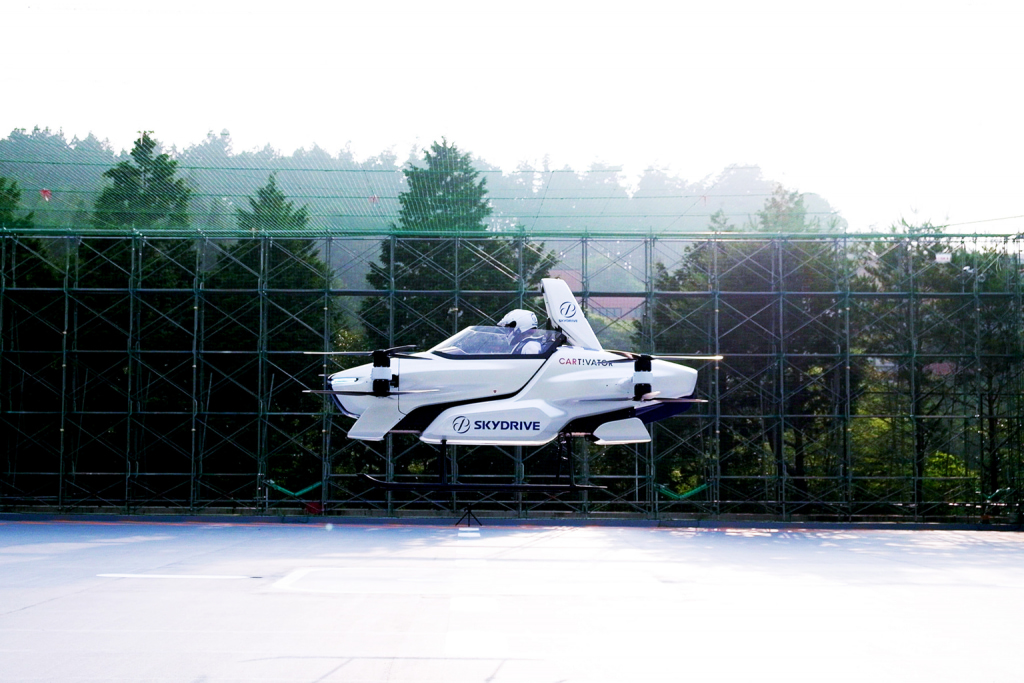What could help you avoid the morning rush hour, cut your commute time in half and still get you to your 9am meeting on time? Hint: The answer is not working from home.
SkyDrive CEO Tomohiro Fukuzawa wants Japan residents to spend their time doing what they love, and that means cutting down idle time such as commuting. The next step for transportation, Fukuzawa explains, is to separate ourselves from restraining land infrastructure and look to the airspace around us. “In 50 years, people will want to move freely,” he says.
And the best way to do that, he believes, is to introduce flying cars. In Fukuzawa’s mind, the science fiction of The Jetsons, Blade Runner and The Fifth Element are realities that are obtainable in our lifetime.
Fukuzawa founded SkyDrive in 2018 to promote the development of flying cars and cargo drones, though the first prototypes go back to 2014. Together with SkyDrive, he is also a board member of the Public-Private Council for the Air Mobility Revolution, a group created by the Ministry of Economy, Trade and Industry (METI) and the Ministry of Land, Infrastructure, Transport and Tourism (MLIT) to establish infrastructure and laws in relation to new flying vehicles.
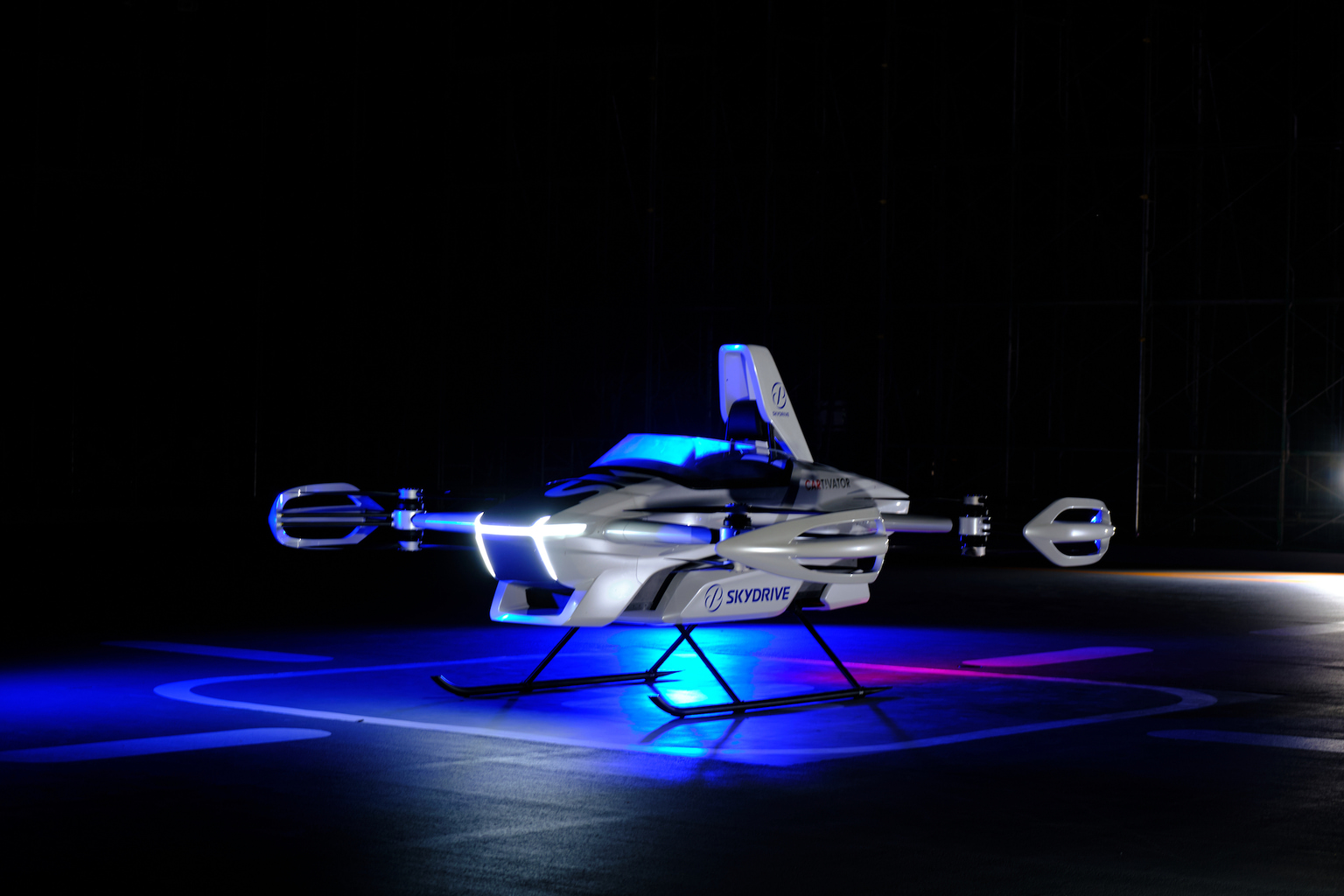
Clearing for Takeoff
What exactly defines a flying car has yet to be determined at a global scale. Japan’s Civil Aviation Bureau (JCAB), however, does have some general criteria. To be considered a flying car, vehicles must run on electric power, be equipped with an autonomous autopilot, and maneuver a vertical takeoff and landing.
SkyDrive has been making waves at automobile and technology showcases worldwide, including the Consumer Electronics Show in 2019. Their first model, the SD-03, made its debut on August 25, 2020, just a few months into the Covid-19 pandemic. This model’s design was intended to replicate a standard 4-wheel car experience, though the SD-03 is airborne only.
Boosted by the success of the SD-03 model, SkyDrive has propelled more ambitious models. The autonmous SD-05 is still under development but may take off as an air taxi for the Expo 2025 in Osaka. The SD-XX — a concept model for further into the future — is a true hybrid, as it will be able to drive the streets as well as cruise through the sky. This, Fukuzawa believes, will achieve the ultimate goal of point-to-point mobility. Another significant advancement is that the SD-XX has an autonomous autopilot. In addition to adhering to JCAB criteria, Fukuzawa explains that an autonomous function would reduce the stress of using a flying car to nearly zero; in other words, almost completely flattening the learning curve and soaring straight into convenient usability.
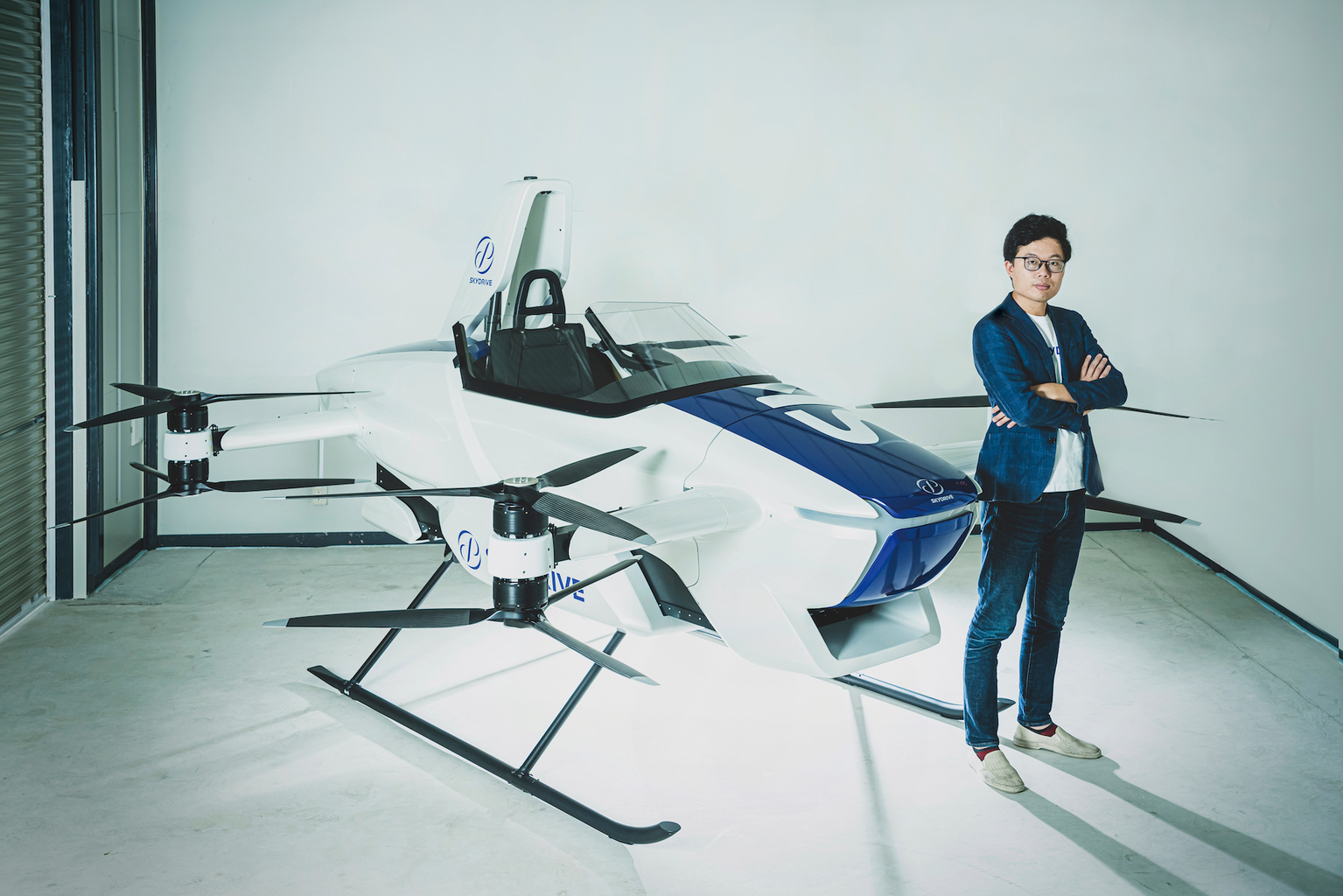
Rewriting the Rules
Aircraft and automobile manufacturers already build vehicles of all shapes and sizes, but flying cars come with a unique set of challenges.
Air isn’t too different from land as airspace can infringe on personal or government property. This is where Fukuzawa’s expertise comes in handy. He works closely with local governments and related organizations to establish regulations that would facilitate the introduction of flying cars for personal use after 2030.
If that seems too early, remember that flying vehicles already exist. The difference is that few are as adapted to personal use and straight point-to-point mobility as SkyDrive’s models. Some flying vehicles require usage of airports, which Fukuzawa believes gives no advantage over flying a small plane.
For SkyDrive, the current main obstacle is acquiring certifications and creating regulations. “After 2025,” says Fukuzawa, “the challenge will change. Then, it’ll be about the infrastructure.”
One way SkyDrive is working around this issue is constructing flying cars that closely resemble helicopters in size, engineering and weight. “There are more than 300 helipads on top of buildings across Japan,” says Fukuzawa. “But only three can [be used] considering the size or weight.” There are also noise concerns and regulations that restrict access to certain helipads. If SkyDrive can adapt to those pre-existing restrictions, their vehicles would be eligible to use the infrastructure that is already in place.
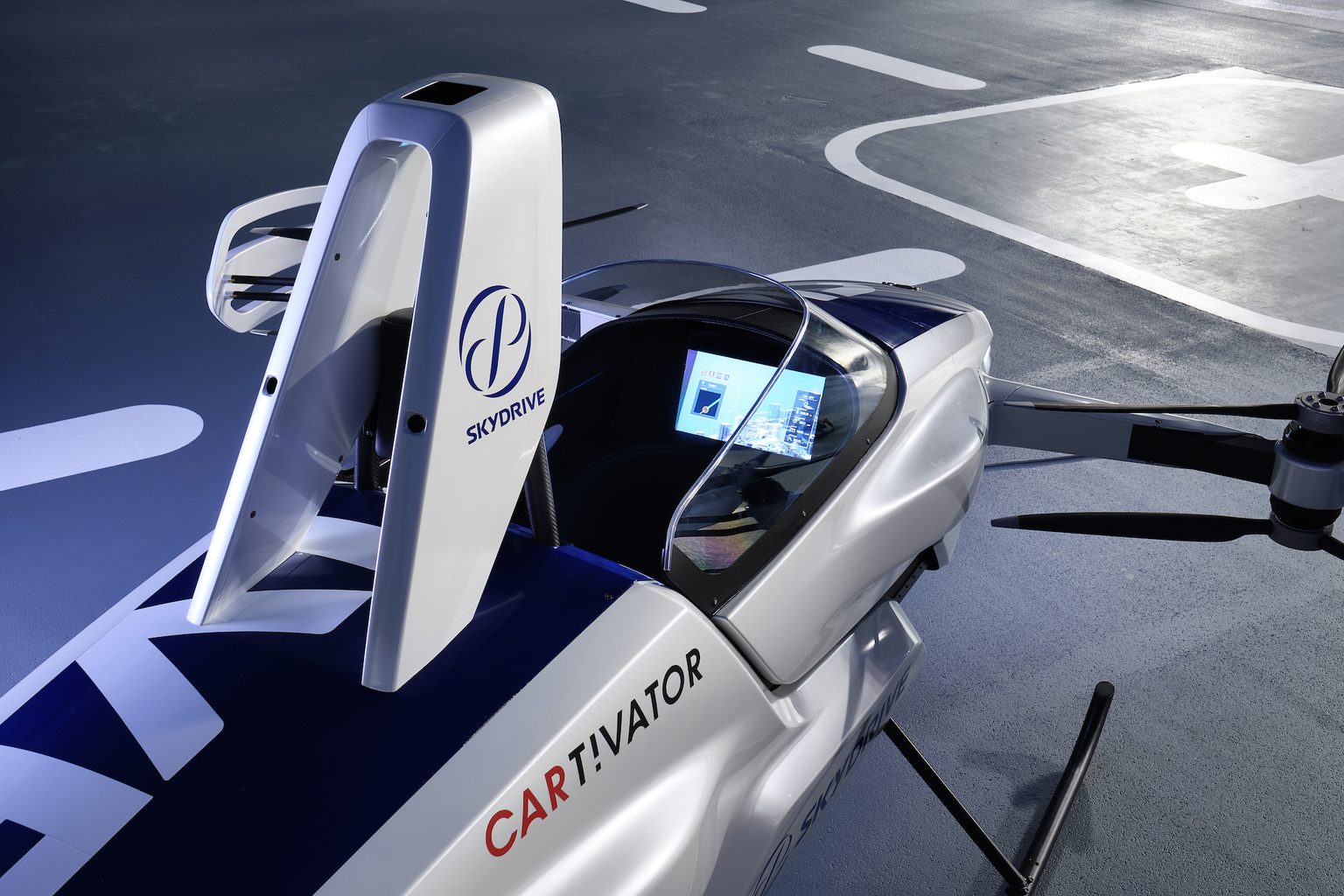
No Emissions, No Problem
Flying cars are the future – but so is sustainability. All while trying to achieve their goals of utmost convenient transportation, SkyDrive incorporates state-of-the-art technologies to make their models as environmentally friendly as possible. The SD-XX model is completely emission-free, working with a fully electric battery.
Fukuzawa also explains that using existing helipads would reduce significantly – if not completely – the need for new infrastructure which, in turn, would reduce the number of raw materials needed to introduce flying cars into society. A more direct mode of transportation could also mean more people would opt for flying cars over traditional cars, further cutting down emissions.
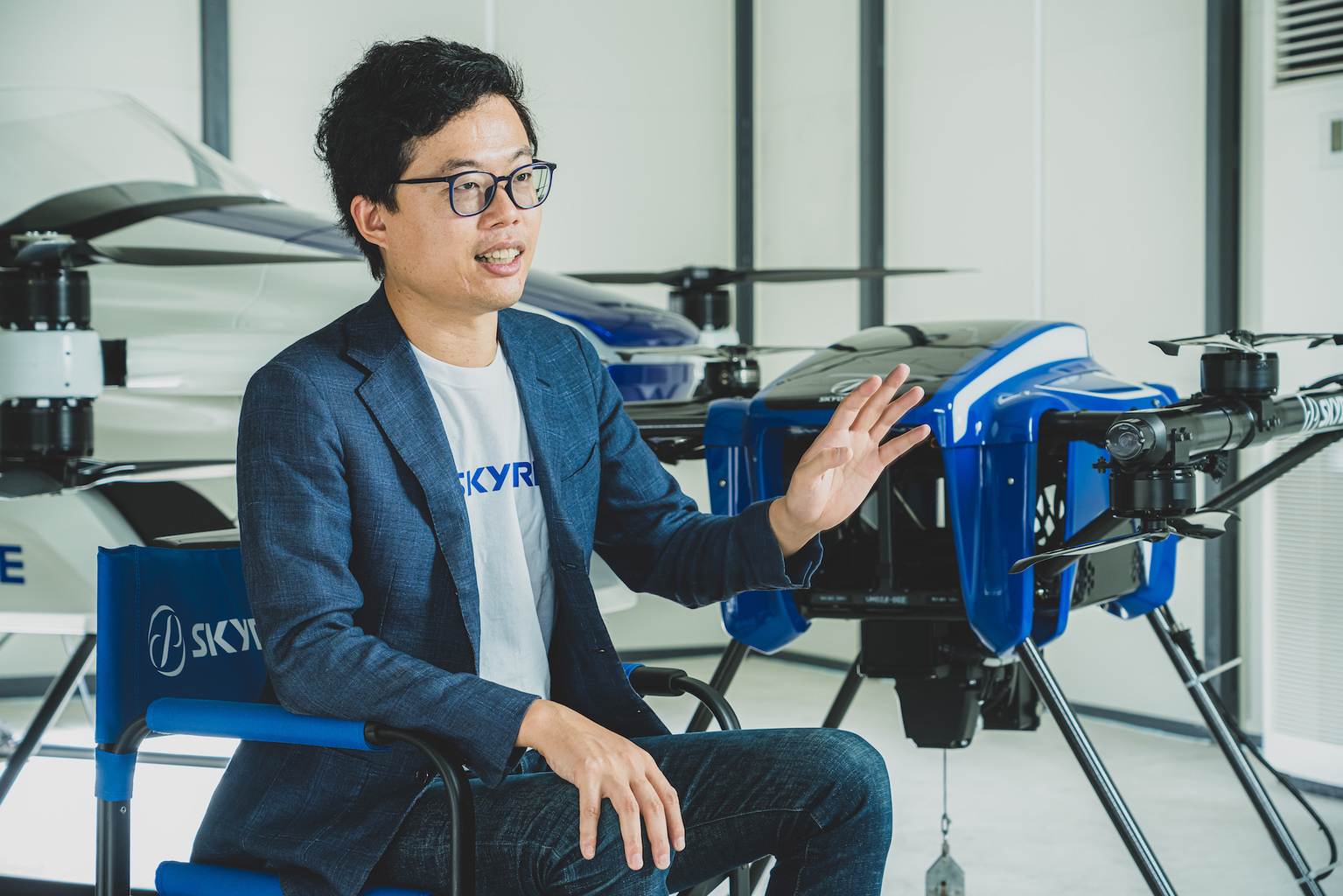
There is much work ahead for Fukuzawa and the SkyDrive team, but they are without a doubt leading the revolution when it comes to sustainable air transport. Thanks to their research, we may see salarymen taking to the skies instead of cramming on crowded commuter trains sooner than we ever imagined.
Learn more at skydrive2020.com
Photos courtesy of SkyDrive

